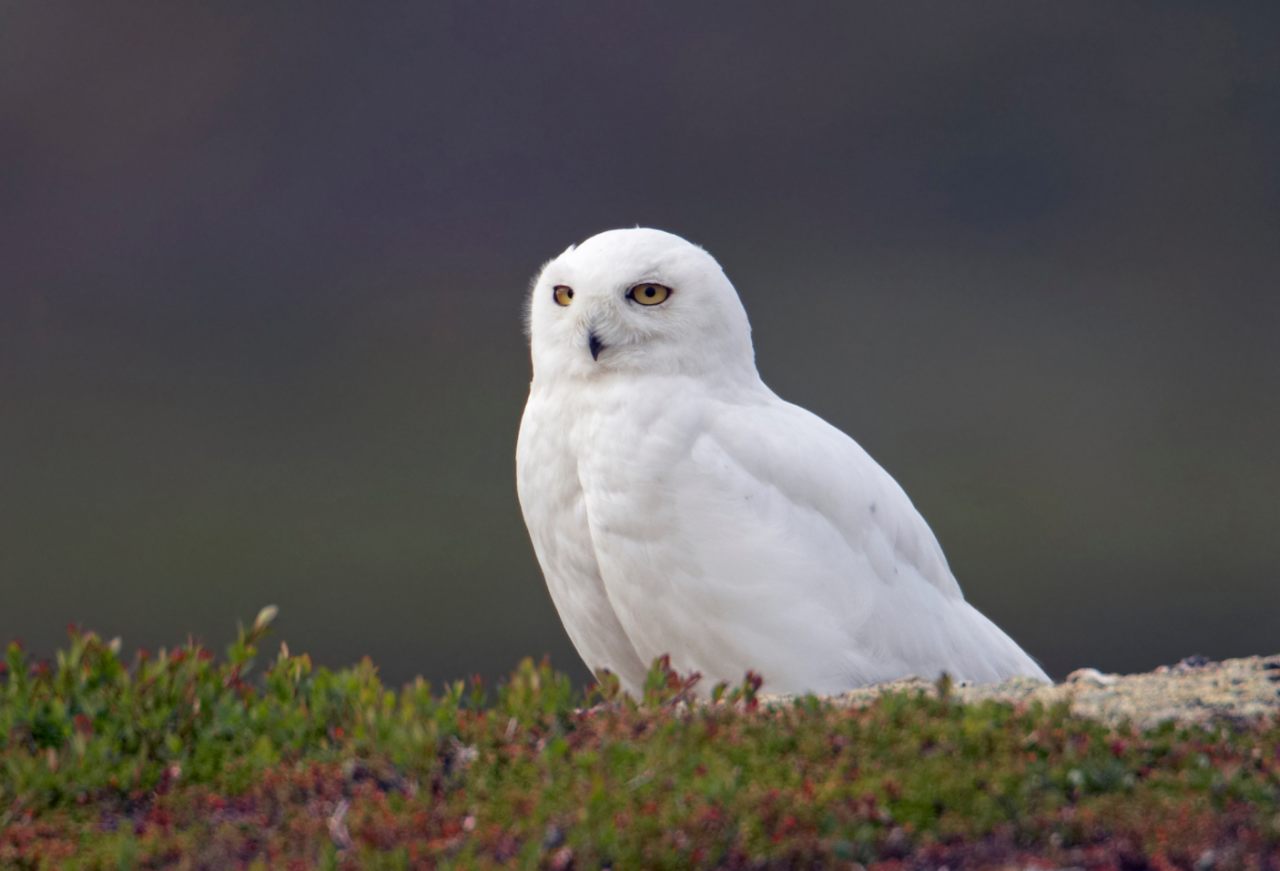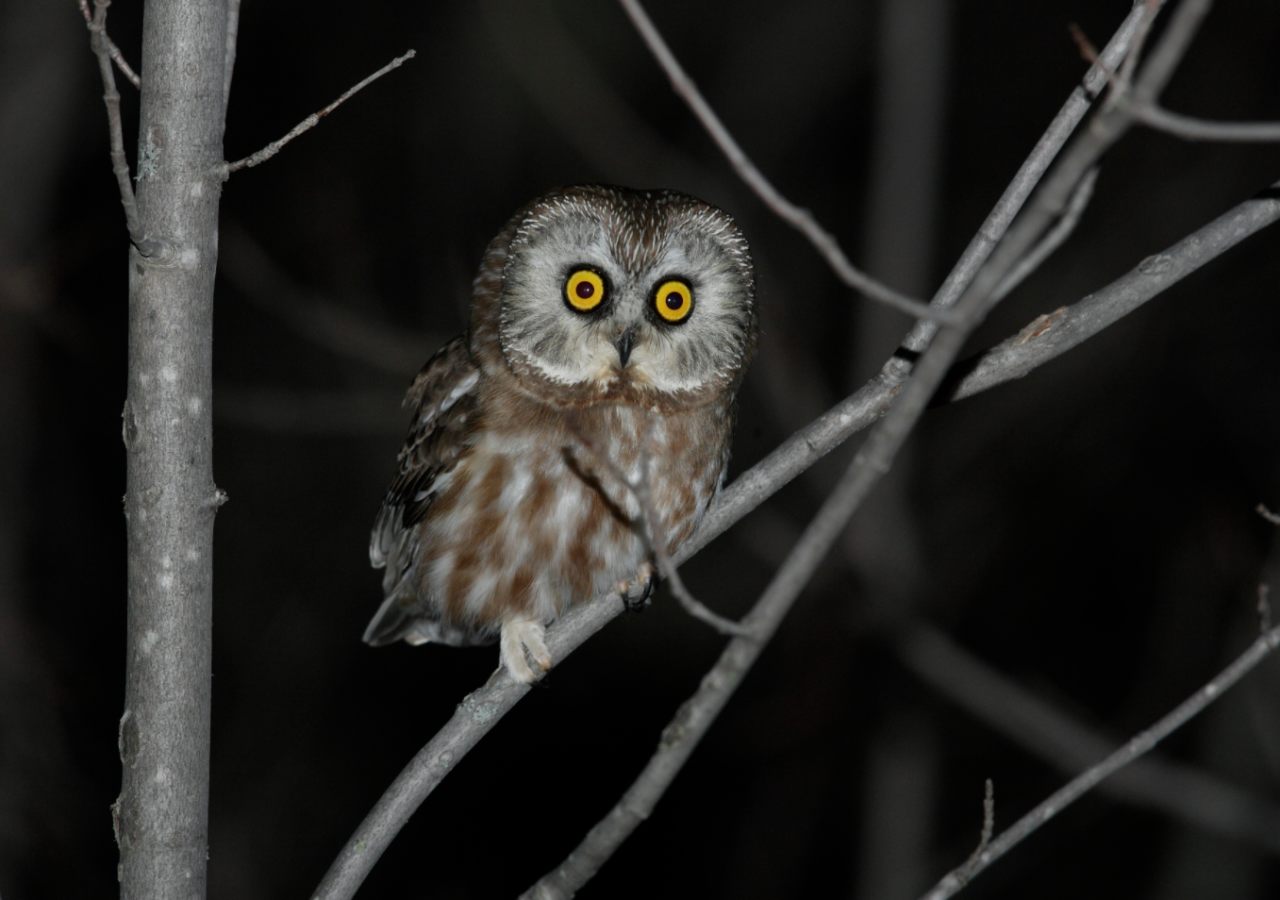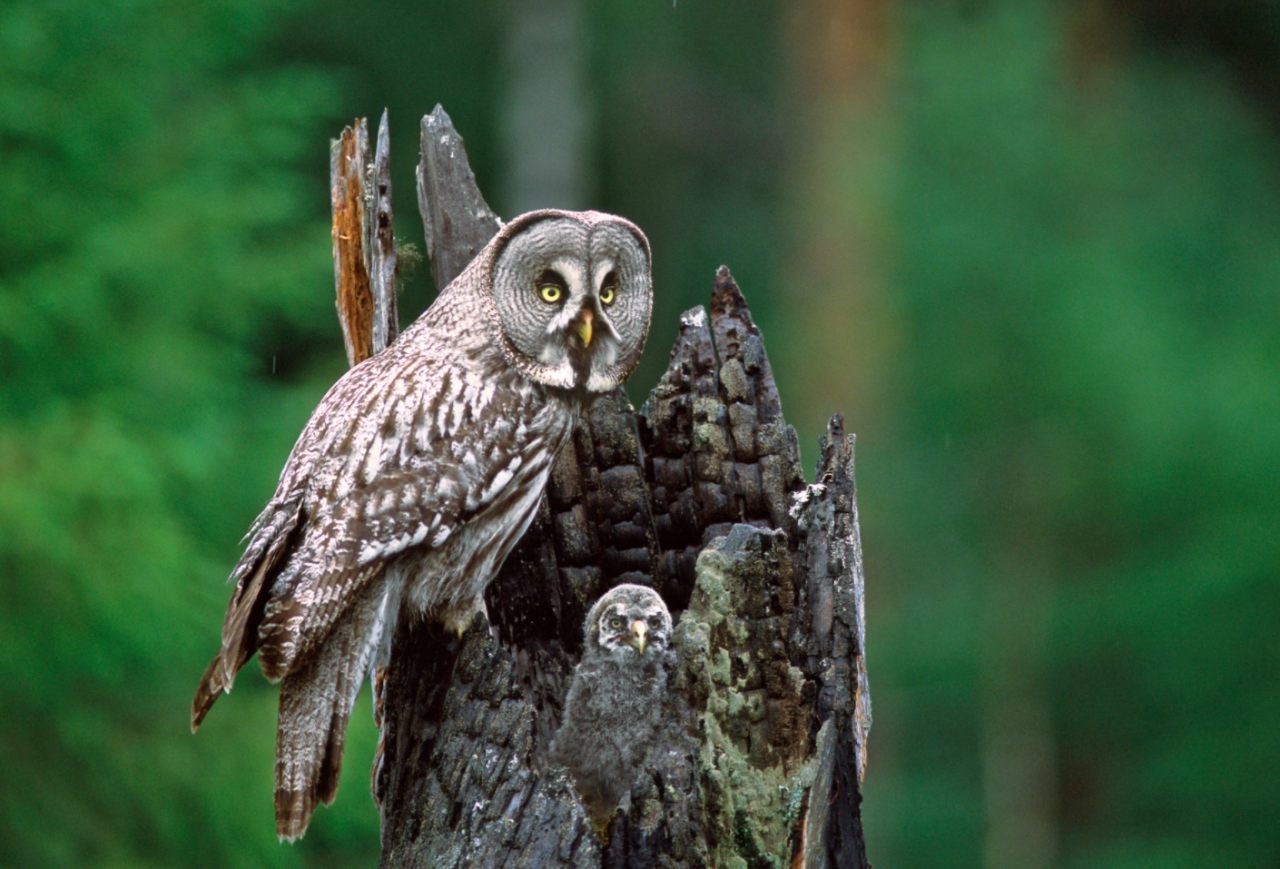David Bird’s Top Places to See Owls in Canada
By David M. Bird, Emeritus Professor of Wildlife Biology and former Director of the Avian Science and Conservation Centre at McGill University.
Consultant editor for DK’s Birds of Canada, Birds of Eastern Canada, Birds of Western Canada, and Pocket Birds of Canada, David Bird takes us on a flying tour through some of the best places to spot owls throughout the country...
A note on birdwatching
Unlike seabirds, shorebirds, waterfowl, and migrating raptors, there are no guaranteed places to see owls with any regularity. With some exceptions such as Long-eared Owls, they do not generally roost in flocks; however they will concentrate in locations with super-abundant populations of voles during winter, especially when conditions are harsh. While some owl species are found in open habitats even in daytime (for example Snowy Owls, Great Gray Owls, and Hawk Owls), most require some heavy searching in thick forest and some luck to be seen.
Keeping an eye out for the more visible hawk species hunting in the daylight can give clues to an owl’s presence. If you see a Red-tailed Hawk frequenting a forest edge in the daytime, there is most likely a Great Horned Owl living in that same habitat. Similarly, if you see a Red-shouldered Hawk in a moist forest environment, chances are that Barred Owls are also there. The same goes for Northern Harriers and Short-eared Owls. Sometimes crows and mixed flocks of songbirds will give away a roosting owl’s presence by calling frequently and harassing them.
Many owl species, especially in daytime, will allow an observer to approach, but keep in mind that flushing them deliberately (or accidentally) from their roosts wastes valuable energy that they could use for foraging, as well as placing them in potential danger from predators or even vehicles. Be respectful of owls in the wild and always keep the bird’s best interests in mind.
Below I have listed the places that I would recommend to visit to see owls across the country; going there does not guarantee that you will see what you are looking for, but it’s a start!
1. Boundary Bay Regional Park, British Columbia
www.metrovancouver.org/services/parks/parks-greenways-reserves/boundary-bay-regional-park
Thousands of birds, including myriad shorebirds and raptors, stop by the sandy beaches, salt- and freshwater marshes, mudflats, sand dunes, and meadows of this internationally recognized Important Bird Area every year. Boundary Bay Regional Park is one of the best places in Canada to see the Short-eared Owl, a species that is sadly declining in the rest of the country. Large numbers of Snowy Owls also turn up in the winter months when they migrate south from the Arctic; look for them perched on driftwood stumps and logs.

Tip:
While photographers are always welcome, avoid harassing the owls by chasing after them for that close-up shot, and above all, do not use live bait to attract them!
2. Amherst Island, Ontario
This is a great place to see owls of several species, and in certain years of northern owl invasions, Great Gray Owls, Boreal Owls and Hawk Owls can be found. On Amherst Island, most birding is done from the roadside because almost all of the land here is privately owned; however some landowners do allow public access. The locally named “Owl Forest” is one such privately owned section and is one of the best spots to reliably see Northern Saw-whet Owls and Long-eared Owls in Ontario. However, due to the increasing popularity of this spot, concern is rising over excessive stress being placed on the owls, so please be respectful and obey all signage.

Tip:
Visit http://www.neilyworld.com/neilyworld/amherst.htm for more information on how to best view the owls without harassing them.
3. Mount Saint Bruno, Quebec
www.sepaq.com/pq/msb/index.dot?language_id=1
Here Eastern Screech-Owls can be found in tangled woodlands in residential habitats, and Great Horned Owls and Barred Owls can be heard calling in late winter and spring along the lake shoreline. Northern Saw-whet Owls (and sometimes Boreal Owls) roost in pines, cedars, and hemlocks, and both Long-eared and Short-eared Owls roost on the local golf course in winter.

Tip:
To find Northern Saw-whet Owls in cedars about 10 to 20 feet tall, you need to poke your head in and look carefully right up the trunk; they will usually stare down at you and not fly away, but do not overstay your welcome to avoid flushing them.
4. Riding Mountain National Park, Manitoba
www.pc.gc.ca/eng/pn-np/mb/riding/index.aspx
Aside from occasional winter invasions to southern climes, your best bet to see a Great Gray Owl, Manitoba’s official bird, would be at this 3000-square-kilometre park. From November through March (with February being the peak month), Great Gray Owls find it difficult to catch voles in thick forests, and thus can be seen foraging in meadows near settlements and along roadsides. Cruise slowly along the roads in Riding Mountain National Park in the early morning and just before dusk—calm, cold, cloudy, and snowy days will increase your chances of seeing one.

Tip:
Consider booking a trip with Eagle-Eye Tours, specifically aimed at finding boreal owl species like Great Gray Owls, Boreal Owls, and Hawk Owls (www.eagle-eye.com/Manitoba-Owls-Tour).
5. Macphail Woods, Prince Edward Island
Located just up the road from the Orwell Corner Historic Village in PEI, Macphail Woods is a protected forest with excellent habitat for Northern Saw-whet Owls. They can be seen occasionally in winter, but most of all in March and early April. These tiny owls regularly frequent feeders, looking for rodents feeding on sunflower seeds and grains that have fallen to the ground, and they also tend to perch at low heights in trees or on fence posts, making them easy to see. If you hear Blue Jays making noise and diving-bombing at something low in a tree, it is most likely a Northern Saw-whet Owl.
Tip:
To learn about joining in on an Owl Prowl aimed at finding Northern Saw-whet Owls and run by the Nature Centre staff and volunteers in April of each year, email macphailwoods@gmail.com.

